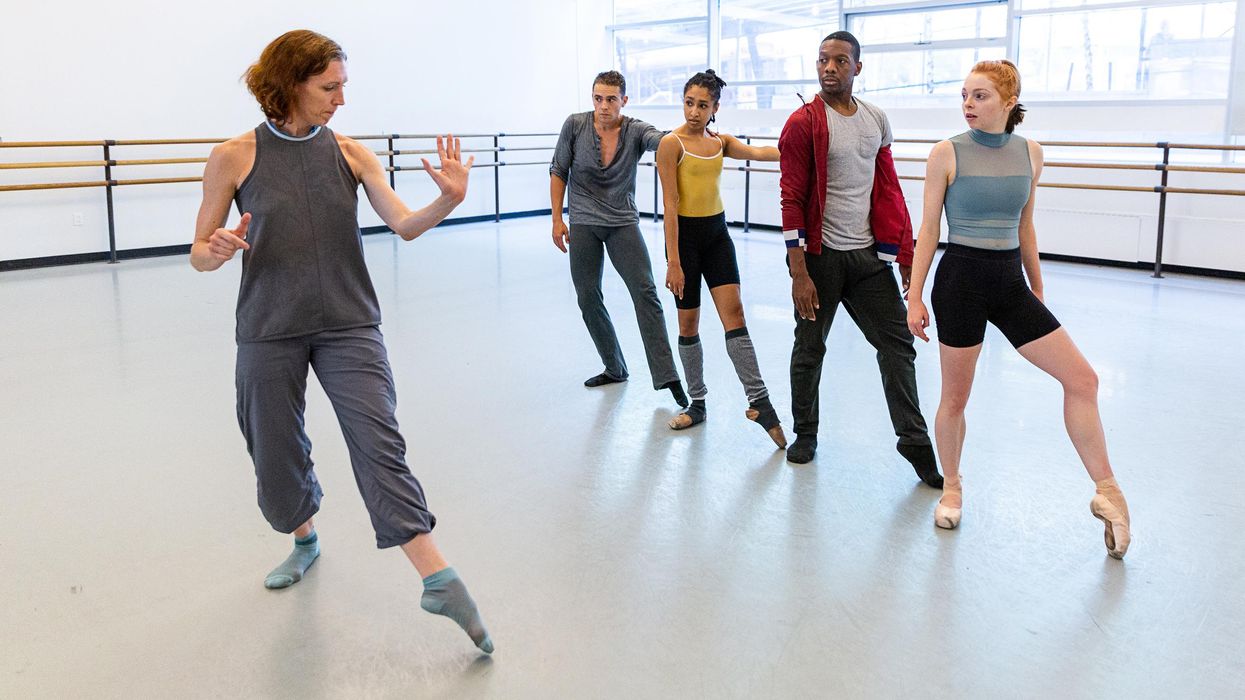So You Got a Commission. Here's How to Make the Time Count
Getting commissioned to create a brand-new piece sounds like a dream to most freelance choreographers. You get to work with talented dancers, in studio space you don’t have to reserve yourself, sometimes with carte blanche regarding choreographic themes, music and even cast size. But, at least in concert dance, these gigs typically operate on a very abbreviated timeline. “You have two or three weeks, if you’re lucky, to make a work,” says choreographer Adam Barruch, who’s created pieces for the Limón Dance Company, Ailey II and BalletX, among others.
It’s wise to invest in significant pre-studio preparation. “Having a good idea of what I want to do before I enter the space is always helpful, so that a distilled version already exists when I enter the room,” says Barruch. Try to find out as much as you can about what the artistic director is hoping to achieve with your commission—well before the first day of rehearsal. Here’s what to ask.
“How long should this piece be?”
In addition to giving you an initial foothold for the scale of what you might fashion, a piece’s approximate length can help you determine the minimum number of rehearsal hours you’ll need with the cast. After creating her first few works for companies including Hubbard Street 2 and Milwaukee Ballet, choreographer Gabrielle Lamb learned she needs three hours of rehearsal per minute of choreography. “I’ve worked much faster, but I don’t like to,” she says.
“What will the music be?”
Barruch always asks if it’s possible to work with a composer on a new score, even going so far as to sometimes allocate a portion of his fee to music composition, if needed.
“Do you have a specific cast in mind?”
If a company director hasn’t already cast your commission, you may have a say in which dancers you work with, or even how you audition them. Lamb, for example, prefers to teach a contemporary class or, when time is more limited, teach a phrase, to see how dancers gel with her movement and approach. “What’s really weird for me is to cast from a ballet class,” she says.
“Where will this piece fall in the program?”
Ask if your work needs to fill a certain role in a program, whether as a closer or opener, or a complement to already-existing dances. Lamb might research the other choreographers or even ask about the color palette of other pieces. “You want to make sure every piece on the program feels like a new color, a new section,” she says.
“Can I bring an assistant?”
Barruch’s longtime collaborator Chelsea Bonosky often accompanies him as his assistant for choreographic commissions, if there’s room in the budget.
How do You Get a Commission in the First Place?
Choreographers don’t typically get commissions out of thin air. Here are three ways to hone your skills and get a foot in the door.
Enter a choreography competition or festival: Gabrielle Lamb earned her first commission by winning the annual choreographic competition at Hubbard Street Dance Chicago’s second company. “When I had very little experience, anyone who was asking for submissions, I sent my work to,” she says. Though Hubbard Street 2 has since dissolved, you can look into opportunities like Milwaukee Ballet’s Genesis competition, Capezio A.C.E. Awards, Palm Desert Choreography Festival, Joffrey Ballet’s Winning Works and Whim W’him’s Choreographic Shindig.
Show work at APAP: Adam Barruch’s first commission, for the now-defunct River North Dance Chicago, came about after the artistic director saw Barruch’s work at the Association of Performing Arts Professionals annual conference in New York City. By signing up to participate in APAP’s conference, you’ll have the opportunity to share your choreography with presenters and bookers from around the country.
Practice with lower stakes: Barruch spent several years honing his choreographic voice, creating work on himself and trusted friends, and at studios and schools. “It helped me refine my process and define what I wanted to do when I did get in the room with a company,” he says.




